All about Japanese tea set and culture

Japanese tea set and Japanese tea culture

Japanese tea culture
Japanese tea and Japanese tea set has long history. As we sell some Japanese tea sets, Japan Design Store tells the background of Japanese tea.
Now, Japanese tea or Japanese tea set is an unprecedented boom!
Do you have any tea bars near your house? Or have you ever heard of “Japanese tea ceremony?” The places to enjoy Japanese tea are increasing these years.
In fact, the export of Japanese tea has increased rapidly. The past 20 years, the amount of Japanese tea’s export increased at 11 times.
As we sell some Japanese tea sets, we would like to introduce the Japanese tea culture. If you have any knowledge of Japanese green tea, you can enjoy drinking Japanese tea more!
Here, we would like to tell you the history, kinds, how to preserve loose tea leaves, and Japanese tea set. Also, we would like to tell you another Japanese tea ceremony, Sencha-do. The most famous Japanese tea ceremony is the ceremony of matcha. However, the usual Japanese tea sencha has tea ceremony, too. Match tea ceremony is hard to do in your house. On the contrary, sencha-do is easier to do if you have Japanese tea set. There are a lot of utensils in sencha-do as well as the tea ceremony of matcha. However, only a few items are needed to make delicious Japanese green tea. We offer some our recommended Japanese tea set, later.

The history of Japanese tea
Japanese tea has long history. It started in Heian era, about 1200 years ago. Two priests Eichu and Saicho brought seeds of tea tree from Tou (the name of China in that era) and planted them. According to an old book “Nihon Kouki,” Eichu dedicated tea to the Emperor. In the old time, tea was so valuable that only noble people or priests can drink Japanese tea.
As samurai were on the rise, Japanese tea became one of the accomplishments of samurai. We can see the description of “Toucha” in an old book “Kissa Ourai.” Toucha is tea tasting. Two or more samurai tasted some cups of tea, and find the production places of each tea.
In Muromachi era, about 600 years ago, a priest Juko Murata originated the concept of “Wabicha.” He created some etiquette of drinking and making tea. The etiquette was the fusion of how to make tea and sprit of modesty and peace of mind. This simple and quiet style was called “Wabi”. Wabi is the basic idea of Japanese “sado,” the Japanese tea now.

SEN no Rikyu, a merchant inherited Wabicha of Juko, and he established “Chanoyu.” Chanoyu is the origin of most known Japanese tea ceremony now.
Nobunaga Oda, a powerful samurai broadened the Japanese tea ceremony and Chanoyu to other samurais. In samurai society, lands were given to retainers from powerful samurais. However, lands were limited. Therefore, Oda kept his eye on the Chanoyu and Japanese tea sets. Instead of lands, Oda gave Japanese tea sets as rewards for his retainers. So, great Japanese tea sets became a status for samurais. To have famous Japanese tea sets meant that the samurai had power.
During Edo era, about 300 years ago, Japanese tea became more popular drink for common people. In addition to matcha, which was drunk in Japanese tea ceremony, sencha was invented. Sencha is easier to make than matcha. Therefore, common people daily drink sencha.
At the end of Edo era, Japanese tea was started to export to other countries.

In Taisho era, about 100 years ago, the first Japanese tea boom came. The export amount of Japanese tea was more than 20 thousand tons.
And now, it is the second Japanese tea boom. As Japanese food have got attention from overseas, Japanese tea also have become popular all around the world.

Wide variety of Japanese tea
What comes to your mind when you hear “Japanese tea?” Drink? The Japanese tea set? We guess that most people say matcha or Japanese green tea.
Actually, there are all sorts of Japanese tea. We would like to tell you the wide variety of Japanese tea here.

This fact is not well known, but do you know that all green tea, black tea, and oolong tea made from same tea leaves? The difference comes from the degrees of fermentation.

The table above shows the classification of tea. As you can see, the process of making tea cause the differences of teas.
Let us describe the process of general green tea. Once the tea leaves picked, the leaves are steamed. This steaming process stops the fermentation of tea. After the tea leaves are steamed, the leaves are crumpled. Then, leaves are dried to be loose leaf tea. To make oolong tea, the tea leaves are withered once before it roasted. Black tea needs withering processes twice.
Most of Japanese green tea are classified as steamed tea. The famous green tea sencha, gyokuro, matcha, or houjicha are all steamed tea. Then, what is the difference of those teas?
The most popular steamed tea in Japan is sencha. Sencha is balanced with astringency, taste, and full-bodied taste.
Gyokuro is the highest-class tea. About 20 days before the picking day of tea leaves, tea farmer covers the field to keep the leaves away from the ray of sun. This process keeps the amino acid of tea. The more amino acid tea leaves have, the greater taste tea has.

Matcha is also grown under the cover. After picking the tea leaves, the leaves are steamed and dried. Then, the leaves turn into powder by stone mill. That is the matcha powder.
Houjicha is roasted tea. After the tea leaves are steamed and dried, roast them. The roasted houjicha have less caffeine than green tea. So, it is good for children, or the drink before going to bed.
Furthermore, all teas have different taste by its production area. For example, sencha in Kyoto and that in Shizuoka have different taste.
There are more and more kinds of Japanese tea. If you have a Japanese tea set, you can compare various kinds of Japanese tea. Enjoy finding your favorite Japanese tea!

Now, we believe that you know the history and kinds of Japanese tea. Before the introduction of making tea, we want you to know the preservation way of Japanese loose leaf tea. The preservation way may change the taste of Japanese tea.
How to preserve loose leaf tea?
When you get good tea leaves, how do you preserve it? Just use it from the bags?
In fact, Japanese loose leaf tea is very delicate food. Tea leaves hate following five factors; humidity, high temperature, oxygen, light (ultraviolet rays), and strong-smelly things.
Therefore, tea leaves are better to be preserved in the places where are at unchangeable temperature, cool and dark, and less smelly.

Then, one idea may come upon in your mind. “Oh, we would better to preserve loose leaf tea in refrigerator, then!” Wait! Refrigerator is not suitable place for preserving Japanese loose leaf tea after you open the bags.
There are a lot of foods in refrigerator, and some have strong smell. Also, when you take the tea leaves from refrigerator, the leaves become humid. When the leaves become humid, it soon will deteriorate.
In addition to the place, we should be careful of the amount when we preserve the Japanese tea leaves. Once the tea leaves are opened, the leaves begin to deteriorate immediately. So, the amount of Japanese tea leaves should be the amount you can use it within 2 weeks to 1 month. If you get large amount of Japanese loose leaf tea, it can refrigerate or freeze with unopened bags. When you use refrigerated loose leaf tea, please defrost it before you open it. Defrosting may take a day. However, without defrosting, the Japanese tea leaves may become humid.
To keep delicious tea, tea canister is recommended. Tea canister can keep the Japanese tea leaves away from light, air, humidity, and smell. In general, tea canister tends to be forgotten if a person wants to collect a Japanese tea set. However, tea canister is needed to keep the taste of Japanese tea. Japan Design Store offers great wooden tea canister. Wooden tea canister “Karmi” has high airtight effect. It can keep the freshness, taste, and flavor of Japanese tea leaves.

- Related Products
Now, we introduced the history, kinds, and how to preserve the Japanese tea. It is time for make tea! The last part will be dedicated to introduce sencha-do. Japanese tea ceremony of sencha is easier than that of matcha. However, it can make very delicious green tea.

How to make delicious green tea in sencha-do?
In this chapter, we will describe how to make sencha in a Japanese tea ceremony of sencha-do. For those who are interested in Japanese tea, join a Japanese tea ceremony would be one of the admired events. Matcha tea ceremony is well known now. However, there is another tea ceremony, the ceremony of sencha. We focus on this sencha-do tea ceremony here.
You may know the Japanese tea set of matcha tea ceremony. The Japanese tea set of sencha-do is consisted of about 15 items. The number and the name of items depends on the schools. Those items are very professional, so we drop the introduction of all items. Here, please allow us to introduce just the way to make Japanese green tea (otemae.) Suppose you are host, and make Japanese sencha for your guests.
-
Warm utensils
Set utensils to be ready, and pour hot water into kyusu (Japanese teapot) and teacups.
-
Put Japanese tea leaves
Turn the kyusu little bit, and dispose the water. Take the proper amount of tea leaves from tea canister, and put into kyusu.
-
Pour hot water
Pour the proper amount of hot water into teapot, and close the lid. Steam the tea leaves and abstract the taste of green tea slowly.
-
Get teacups ready
Turn the teacups slightly, about three times, and dispose the hot water.
-
Pour Japanese tea
Pour tea from kyusu to teacups. To make even taste for every cup, pour the one third of tea once for a cup, and do as same as this for next cup.
-
Clean teacups
Put saucers, and wipe the bottom of the teacup with dish towel.
-
Complete!
Set teacups on the saucer and serve the tea for guests.
We are sorry but we do not have all the Japanese tea set of sencha-do in our shop. However, you can make delicious tea with a few items.
The minimal necessities are a kettle, a teapot and teacups. Japan Design Store offers all these items for making delicious tea.
First, kettle is needed for boiling water. With Nanbu cast iron kettle, you can make delicious water. Even the tea leaves are good, bad water only makes bad tea. Nanbu cast iron kettle can make water delicious.

- Related Products
Second, teapot is necessary. You put tea leaves, and brew fresh green tea from the teapot. Cast iron teapot can keep the temperature of hot water and tea. The temperature of water is very important to make delicious tea. Therefore, teapot with high thermal conductivity is the best.

- Related Products
Last, you drink tea with teacups. The teacups used for Japanese green tea is called yunomi. Of course, you can drink Japanese green tea with your mugs. However, yunomi is the best size for Japanese green tea. In fact, Japanese green tea can enjoy second or third brews. If the hot water remains in a teapot, tea leaves become too abstracted. To make a tea for a large cup such as mug, large amount of hot water is needed. Therefore, the small teacups would be better for Japanese green tea.

- Related Products
We introduced the way to make delicious tea with those items. Please refer to "How to make delicious Japanese green tea".
For your pleasant tea time, we have a special Japanese tea set. The set includes cast iron teapot, yunomi, tea canister, and a plate. Palace plate can make the confectionery stand out. In sencha-do, we use kaishi, a piece of paper. However, kaishi is disposal item. Palace plate can be used for other foods. This set brings you the atmosphere of a tea shop.

- Related Products
Also, for those who want the minimal-necessary items, we recommend the Japanese tea set of tea canister and teapot.
In fact, we offered this Japanese tea set to a Japanese TV drama “Kirawareru Yuuki.” In that drama, heroin used the wooden tea canister and teapot for her relaxing time.
See more details from "We offer our tea set to Japanese TV drama "Kirawareru Yuuki"".

- Related Products
Now, were we able to get your understanding on Japanese tea even just a little? However, the most important thing is to enjoy Japanese tea.
Japanese green tea is a deep and wide world. Just take a step forward! We always welcome you!!

Related Items
-
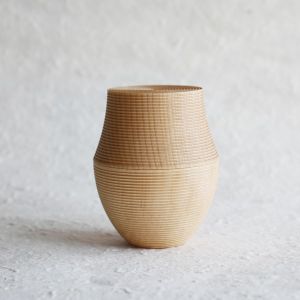
Tea Canister / KAMA / Plain / Karmi Series / Gato Mikio Store
$199.99Available to reserve -
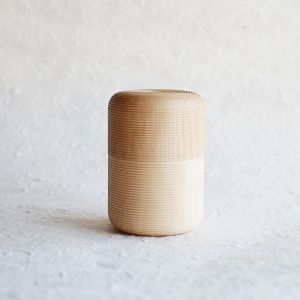
Tea Canister / TAWARA / Plain / Karmi Series / Gato Mikio Store
$199.99Available to reserve -
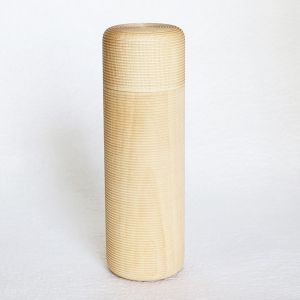
Tea Canister / MOTO / Plain / Karmi Series / Gato Mikio Store
$199.99Available to reserve -
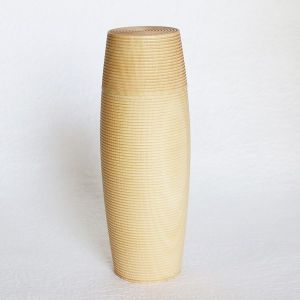
Tea Canister / TARU / Plain / Karmi Series / Gato Mikio Store
$199.99Available to reserve -
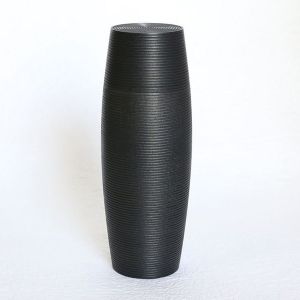
Tea Canister / TARU / Black / Karmi Series / Gato Mikio Store
$199.99Available to reserve -
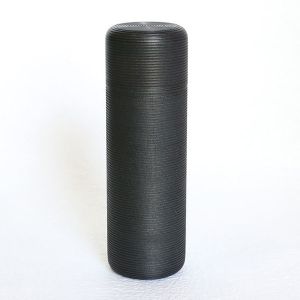
Tea Canister / MOTO / Black / Karmi Series / Gato Mikio Store
$199.99Available to reserve -
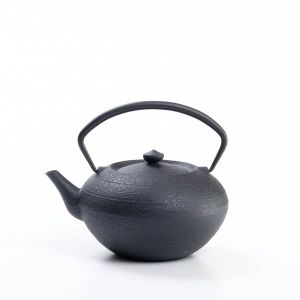
Cast iron teapot / Hiratsubo S / Chusin Kobo
$149.99Available to reserve -

Casting saucer / Square / Chusin Kobo
$19.99Available to reserve -
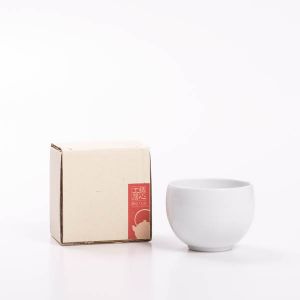
Teacup / Round / Chusin Kobo
$17.99Available to reserve -
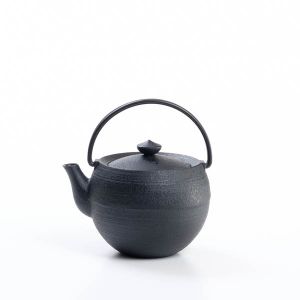
Cast iron teapot / Marutama S / Chusin Kobo
$119.99Available to reserve -
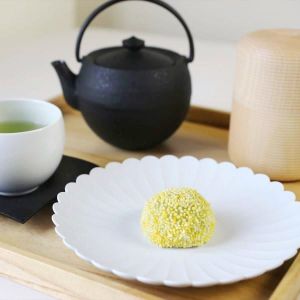
[Set] Japanese tea shop set at home
$375.99Available to reserve -
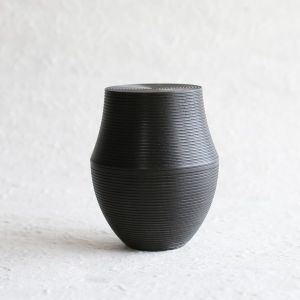
Tea Canister / KAMA / Black / Karmi Series / Gato Mikio Store
$199.99Available to reserve -
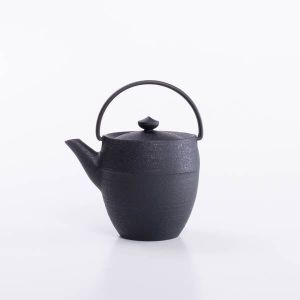
Cast iron teapot / Maruzutsu S / Chusin Kobo
$119.99Available to reserve -
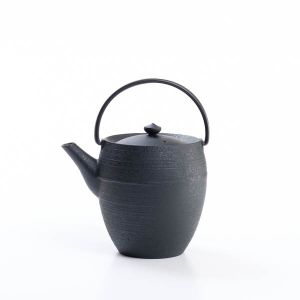
Cast iron teapot / Maruzutsu L / Chusin Kobo
$219.99Available to reserve -
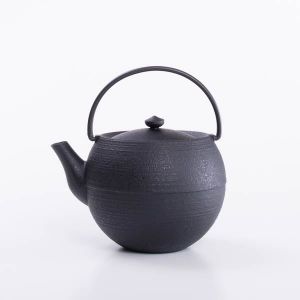
Cast iron teapot / Marutama L / Chusin Kobo
$219.99Available to reserve -

Cast iron teapot / Hiratsubo L / Chusin Kobo
$229.99Available to reserve -
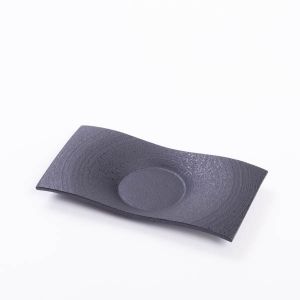
Casting saucer / Rectangle / Chusin Kobo
$19.99Available to reserve -
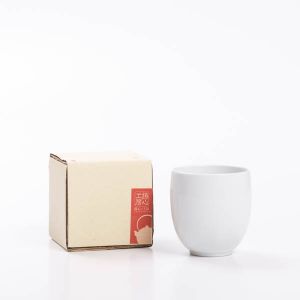
Teacup / Oval / Chusin Kobo
$17.99Available to reserve -
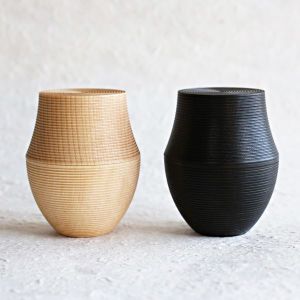
[Set] Pair Tea canister / Karmi / KAMA / Black & Plain / Gato Mikio Store
$249.99Available to reserve -
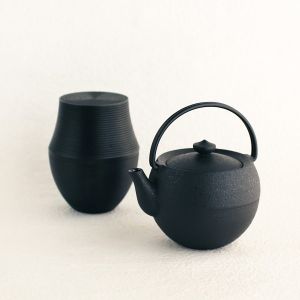
[Set] Cast iron teapot Marutama S & Tea Canister Karmi KAMA Black×1
$249.99Available to reserve -
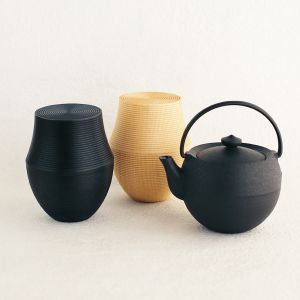
[Set] Teapot Marutama S ×1 / Tea Canister Karmi KAMA ×2 (Black & Plain)
$369.99Available to reserve








![[Set] Japanese tea shop set at home](https://japan-design-contents.imazy.net/products/small/de_210919_00.jpg)
![[Set] Cast iron teapot Marutama S & Tea Canister Karmi KAMA Black×1](https://japan-design-contents.imazy.net/products/small/de_218396_00.jpg)
![[Set] Teapot Marutama S ×1 / Tea Canister Karmi KAMA ×2 (Black & Plain)](https://japan-design-contents.imazy.net/products/small/de_218397_00.jpg)
![[Set] [Paulownia box] Pair beer cup / Nousaku](https://japan-design-contents.imazy.net/products/small/de_218095_00.jpg)
![[Set of 4] [Exclusive box] Palace Plate x 4 / φ220 (x2) + φ160 (x2) / 1616 arita japan](https://japan-design-contents.imazy.net/products/small/de_218091_00.jpg)
![[Set] [Paulownia box] 1 Katakuchi L Gold + 2 Guinomi (Gold & Silver) / Nousaku](https://japan-design-contents.imazy.net/products/small/de_218278_00.jpg)
![[Set] [Paulownia box] Pair pure copper tumbler / Mat & Brown / WDH](https://japan-design-contents.imazy.net/products/small/de_219533_00.jpg)
![[Set] Pair of Gold leaf tea glasses and Coasters / Kannyu / Hakuichi](https://japan-design-contents.imazy.net/products/small/de_218898_00.jpg)









